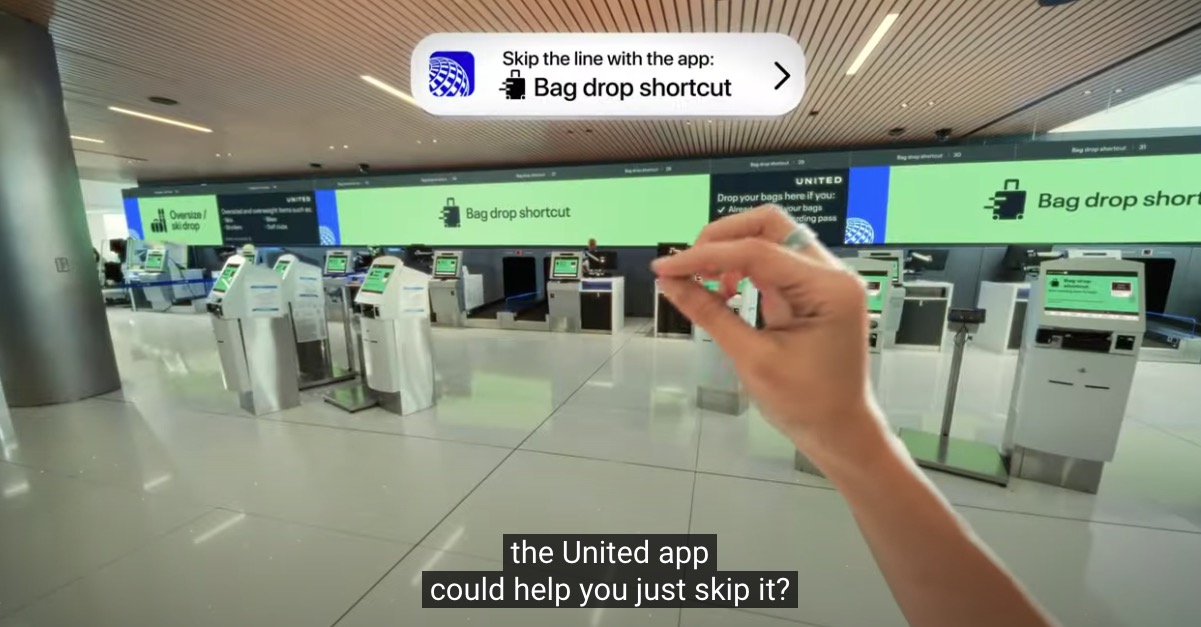
United Airlines Using “Headless” Digital Experience Platform To Drive Some 1,800 Screens
February 22, 2024 by Dave Haynes
US air carrier United Airlines has started rolling out color-coded directional signage for print and digital in the pre-security “lobbies” of some of the airports it serves, responding to customer feedback that what was in place needed work.
In an interesting twist, Linkedin posts talking up the new look for signage reference how United’s digital signage team uses a digital experience platform called Sitecore to drive its 1,800 or so screens in airports, but also to publish and manage the carrier’s intranet.
The new lobby signage reflects the outputs from a three-step trial run at a very busy hub for the carrier, Chicago O’Hare.
The air carrier put a team together that ran tests with three phases – refining the names to get them just right, the icons for each, and then colors.
Suesan Chen, Senior Manager of Brand for United, says in the air travel blog Simpleflying, the team highlighted the importance of having distinctive colors to make things easy for passengers in busy and chaotic airport lobbies. The colors used are pastel, with lighter blue, pink, green, and others featured on the new signs. This aligns with the updated branding that United has slowly rolled out throughout its website, app, and even screens in airport terminals.
The airline has also started doing dynamic translation services from English to Spanish, on the gate information departure screens, for flights out of the US to Mexico.
Using a digital experience platform like Sitecore reflects the needs of larger organizations with multiple information channels – like web and mobile apps – to use some sort of headless content management platform that allows them to publish in many ways from one toolset … as opposed to doing many things with one tool, and then firing up a digital signage CMS to do that specific work.
Notes Sitecore:
With the Sitecore-based composable stack, United Airlines has rebranded, redesigned, and enhanced its digital signage solution bringing better, personalized self-service information to up to 36m travelers a year. Content management is simple, agile, and easy to update without needing complex coding.
Seamless integration with associated applications like booking and flight systems means real-time information is displayed on digital signs throughout the airport so that travelers get the right content at the right time at each gate. QR codes give instant access to more information.
Airlines and airport terminal operators can, of course, do that sort of thing inside the more sophisticated, data-centric digital signage CMS platforms on the market, but again, that can mean multiple tools, versus the idea of a headless platform that can unify and streamline workflows. Several software companies – signagelive, ScreenCloud and Screenly come to mind – have specifically referenced headless capabilities, and that is essentially how Samsung is positioning its new VXT platform, with functionality apps sitting on top of a core management platform.
This video shows United’s screens in action and the use of the color coding and icons.



Leave a comment